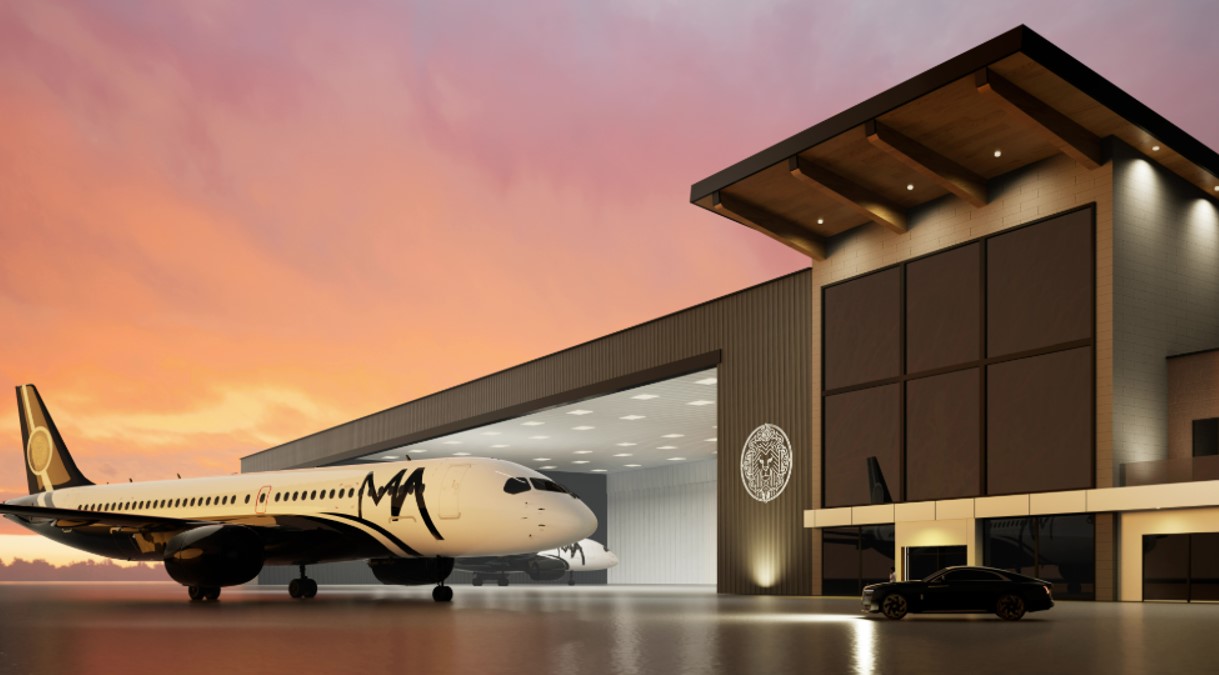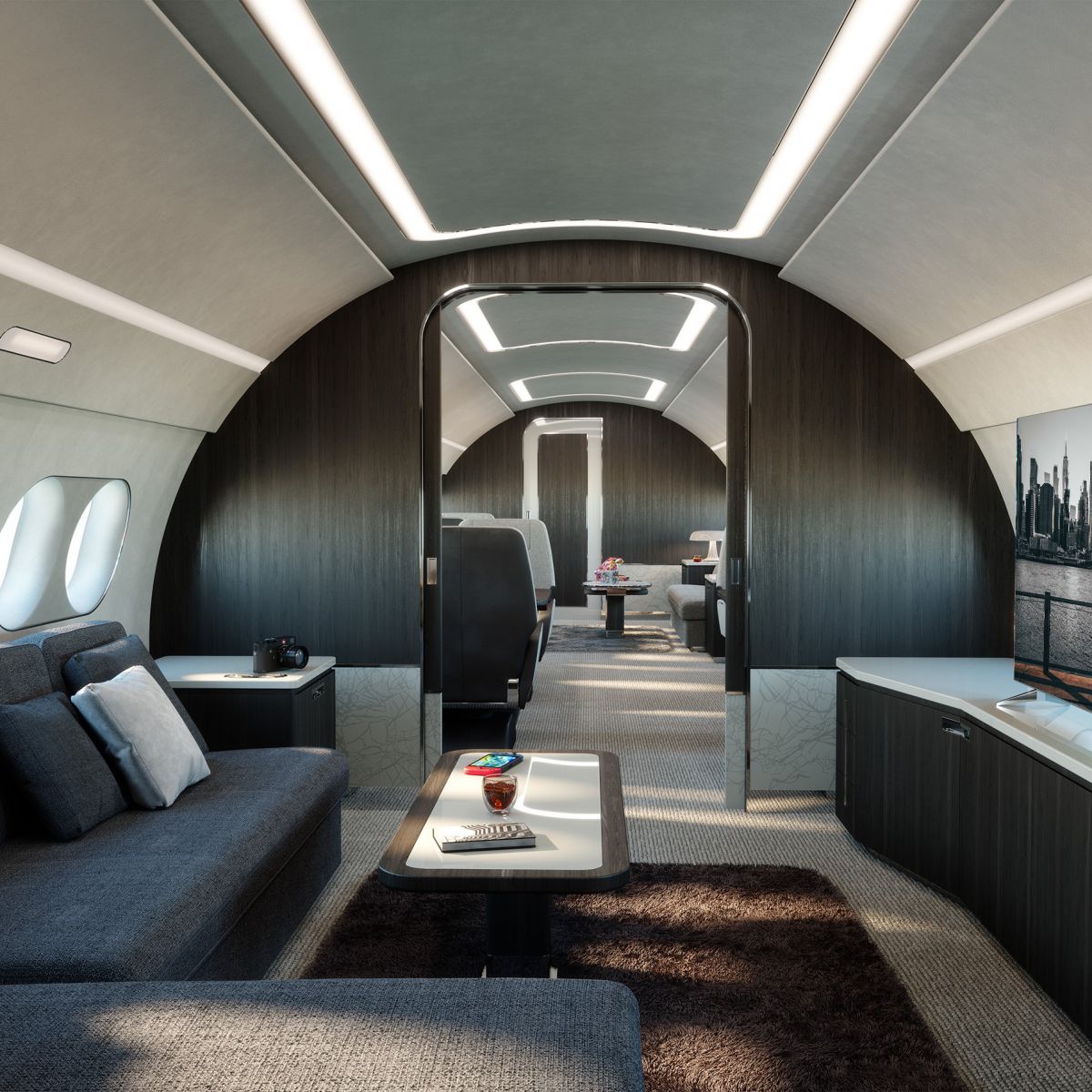While the world economy has been through a pandemic, a spike in inflation, rate hikes, geopolitical conflict and more, it looks as if the business jet industry is reaching new heights. In fact, some of the disruptions of recent years have played into the sector’s hands.
According to a 2024 report by Honeywell Aerospace Technologies, the sector has been on an “amazing six-year run-up”; business aviation activity reached a recent high level and is settling in for a “prolonged period of steady growth.” The annual report said aircraft manufacturers expect to deliver 830 new business jets valued at $27 billion in 2025, capping a stretch that began in 2019 during which aircraft deliveries rose by 16 per cent and spending on new aircraft climbed 32 per cent. The report’s authors predict steady growth for the next decade, with business jet deliveries and expenditures up at compounded rates of at least 2 per cent and 3 per cent from 2024 to 2034. North America remains dominant. North American operators will take delivery of two-thirds of business jets produced in the next five years, slightly more than the outlook projected in last year’s report, it said.
As this news service has noted before, such as in this profile of Europe’s Airbus and its business jets division, or here, the health of this sector can be a barometer for wealth managers and advisors to track. It sheds light on how affluent people are feeling; what their appetite for risk and experiences are, and how much they’re willing to spend on comfort and avoiding problems.
One firm getting into the act is Magnifica Air, based near Orlando, Florida. It has been raising funds for its latest venture, Magnifica Air. This is an all-premium, scheduled airline set to launch in late 2027 that bridges the gap between commercial first-class and private aviation. Previous funds and investment initiatives have raised “substantial backing” from high net worth individuals and family offices, Magnifica said in an announcement last November. Florida-registered CIG Fund 2, which invests in firms including those in aerospace, has secured capital and is open to US Accredited Investors. The fund is overseen by CIG Capital.
“This is a scheduled airline redefining air travel by offering a private aviation-like experience at a fraction of the cost,” Chris Kane – the chief investment officer at CIG Companies, told this news service. “Designed for discerning travelers, it operates from private terminals to ensure seamless boarding and security processes. Passengers enjoy an AI-powered concierge for tailored services, all-premium seating with spacious cabins, private family suites, and gourmet meals tailored for in-flight dining,” he said.
Kane said the offering, targeting high net worth and ultra-HNW clients, “bridges exclusivity with accessibility.”
“Over 70 per cent of surveyed luxury travelers found the concept highly appealing, reflecting its potential to redefine premium travel,” he said. Beyond the US, Magnifica Air has its sights on international markets including London and Paris.

Magnifica Air visual
This is a sector known for its ups and downs. Even private and business jet travel got hit by the pandemic. The sector can attract unwanted attention from environmental protestors riled about emissions, although figures in the sector say it is working hard to improve efficiency.
After a post-pandemic boom in flights, business has returned to a more normal level, Gregg Brunson-Pitts, CEO and founder of Advanced Aviation Team , a business operating in the US and provider of on-demand jet brokerage, told this publication. Brunson-Pitts has the attention to detail of someone who once took care of flights for the White House.
“We work with a lot of family offices. We specialize in groups that need a lot of attention and do a lot of international travel,” he said.
Such families need a lot of support around privacy and security. AAT taps into how people want options for accessing aviation resources. Some people, for example, don’t necessarily want to own a private jet – this is even seen as “passe” by some.
One common theme from the firms FWR spoke to is that the problem of a pilot shortage mentioned here, for example, appears less acute now. Brunson-Pitts said that in the US market, supply of aircrew has mostly caught up with demand. The founder of another US firm, based in North Carolina, told this publication that the pilot shortage challenge seen a few years ago has “subsided.”
Brokers, charterers and operators will hope that supply bottlenecks can be managed. Honeywell’s report, as noted above, reckons that based on a starting point of near record numbers already this year, its “macroeconomic trends and operator feedback indicates business aviation deliveries will continue to grow steadily for at least the next decade.”
“Aircraft owners and operators will invest an estimated $280 billion in new business jets between 2024 and 2033. This 10-year projection is up slightly from the $278 billion forecast in last year’s Outlook. Aircraft deliveries will total 8,500 during the period, starting with 830 new business jets in 2025, which is up from 750 in 2024,” it said.
Longer distance
One area that appears to be gaining traction is long-haul business jets. Back in 2022, with memories of the pandemic still fresh, this publication spoke to Europe’s Airbus and its Airbus Corporate Jets division. It hopes this will gain it a significant edge over rivals.
The European aircraft manufacturer, headquartered in Toulouse, France, has a mix of ACJ319neo and ACJ320neo corporate aircraft which, it says, boast three times more space than traditional large business jets with similar range and operating costs.

Design of Airbus interior
Smooth ride?
The global market looks relatively steady, although the headline numbers can make regional changes. A WingX weekly global market tracker report from mid-December 2024 showed that there were 72,682 business jet departures around the world, rising 2 per cent from the same week a year ago and, on a four-week trend, growth was up 5 per cent from the year before. Since the start of 2024, there were more than 3.5 million departures, down a touch on a year earlier.
A number of manufacturers jostle for business. Boeing, Bombardier, Gulfstream and Dassault are some of the main players in the field. Boeing, for example, has its Boeing Business Jets division, offering a range of planes for business and private, charter, corporate and head-of-state operations. The rise of the sector has its barriers, however. A Fortune Business Insights report has said there are delays in aircraft being certified, and differences in the way in which national regulations of the sector are interpreted across countries. Aviation authorities can impose a long certification process. To some extent, countries can fix problems by co-operating with other countries’ regulators; this explains why certain jurisdictions, such as Malta, Guernsey, Switzerland and the Isle of Man make a point of being regulation-friendly hubs.
Tax and regulations, as well as the HR challenge of recruiting and keeping pilots, technical crew and support staff, are ever-present headwinds. In the US, for example, the tax treatment of owning or leasing private jets for business use can be a politically hot issue.
Talk of politics takes us back to Brunson-Pitts of AAT. His career started in the White House in 2002, under President George W Bush, eventually becoming director of the White House Travel Office. He learned at a young age how to deal with complex transportation logistics, including coordinating with various stakeholders such as the Secret Service, White House press pool and staff. Today, AAT works with political campaigns and candidate travel and was the exclusive provider for the Biden/Harris 2020 campaign involving more than 1,130 flights. His background in working for the US president has its advantages. “There is initial credibility when I am talking to a family office,” he said.
Work assignments can include music roadshows, book tours, political campaigns. “There is a shared language and I can understand some of the challenges that some people have,” Brunson-Pitts continued.
"Family offices have become an increasingly important segment of my business, and I certainly see that trend continuing to grow. These clients are highly discerning and seek more than just a flight – their focus often goes beyond the immediate need for transportation. They ask detailed questions about aircraft options, safety protocols, pilot qualifications, and long-term service agreements to ensure they’re partnering with an aircraft provider who can meet their ongoing travel needs,” he continued. “Many family offices also look for support with complex itineraries, multi-leg trips, and last-minute changes, often requiring access to aircraft on short notice.”
FWR asked Brunson-Pitts what sort of aircraft are popular right now.
"We continue to see strong interest in larger cabin aircraft, especially for long-haul international travel, as clients prioritize both comfort and productivity. Travelers want more spacious cabins that allow them to work, unwind, and spend quality time with family or colleagues during the flight. With new models like the Gulfstream G700 entering the market, we're seeing a shift in availability for older aircraft such as the G650 and G550. The upcoming Bombardier Global 8000 and Falcon 10X will further enhance the market, offering travelers more options that balance performance with luxury,” he said.
Sustainable
Over at the new Magnifica Air operation, CIG Companies’ Kane was effusive on the sustainability angle.
“Magnifica Air will integrate industry-leading practices to significantly reduce environmental impact without sacrificing comfort. The flights will be powered by Sustainable Aviation Fuel , sourced from renewable resources such as waste oils and agricultural residues, which can reduce carbon emissions by up to 80 per cent across its lifecycle. The aircraft will be able to fly with up to 50 per cent SAF from the launch and 100 per cent starting in 2030, with all SAF certified under international sustainability standards to ensure environmental benefits without impacting food resources or leading to deforestation,” he said.
The affluent/HNW air travel segment is a battleground.
“High net worth travelers with assets between $100,000 and $5 million represent a significant underserved segment with unmet needs in premium air travel options,” Kane said, arguing that the Magnifica Air business offers a “private jet-like experience” at about a third of the typical cost.
“Passengers will depart directly from private VIP lounges, avoiding check-in queues, crowded terminals and baggage claims. The flight will feature amenities and comfort levels typical in private aviation, including concierge service, gourmet dining, a bar/lounge and private suites large enough for a family of four, he said.
The initial launch of Magnifica will see a fleet of 14 aircraft dedicated to six primary markets.
Asked about the CIG Fund 2, Kane said it is targeting a return of two to three times on investment capital, or internal rate of return of 16 per cent or more, and over a period of seven to 10 years.
